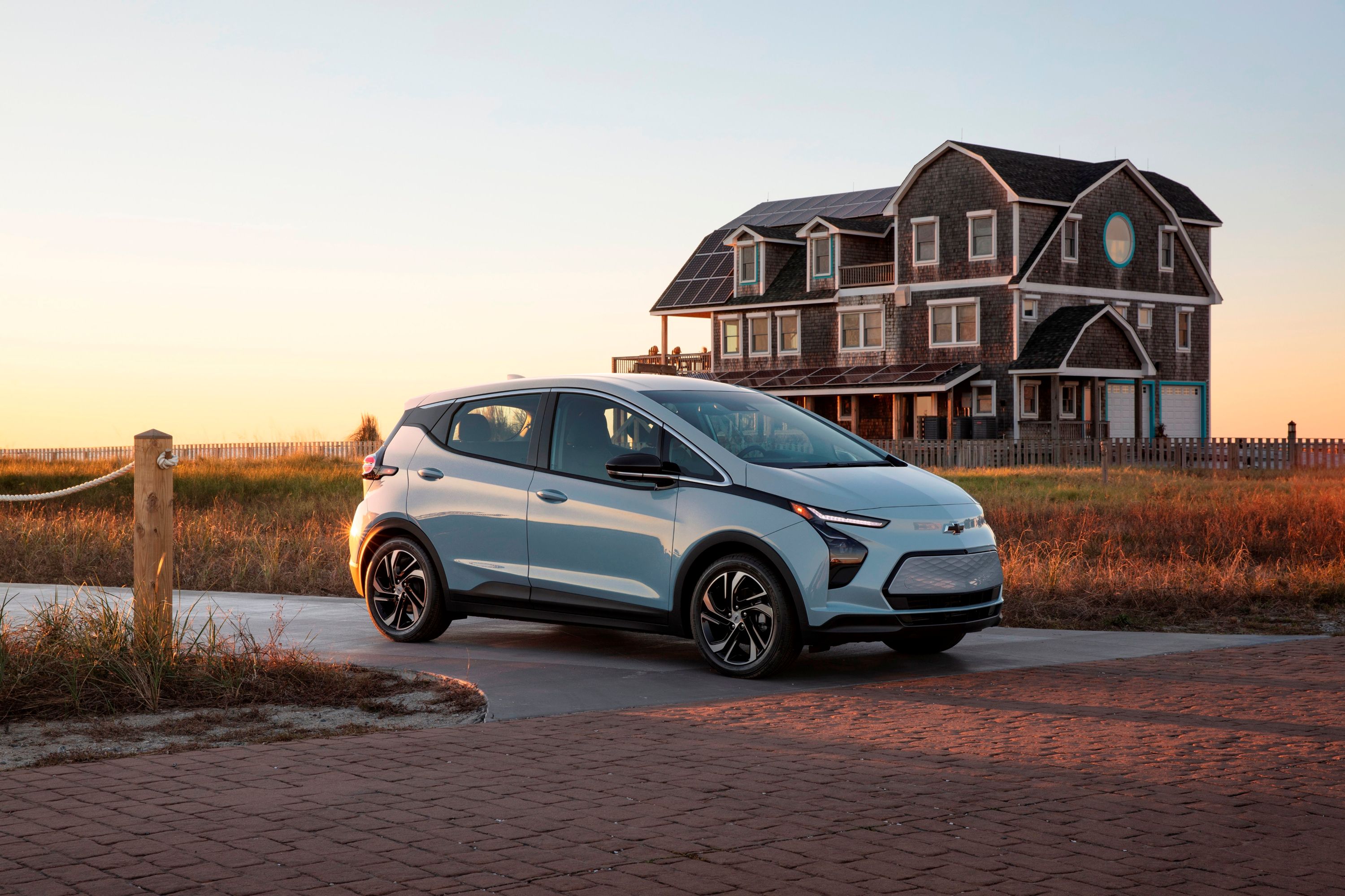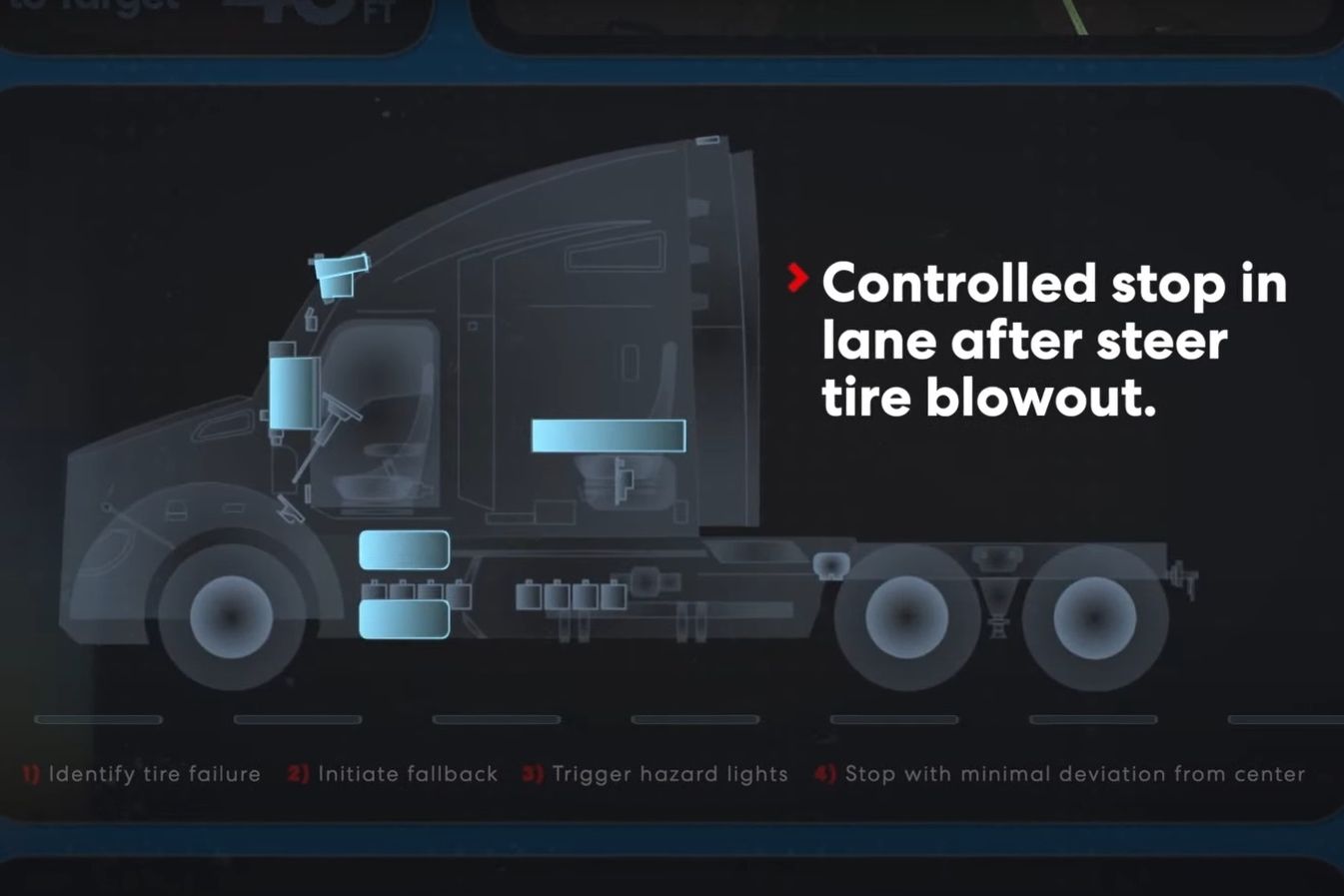
We've seen some impressive autonomous features over the years, but few compare with Kodiak Robotics' displays of what its self-driving semi trucks are capable of. Instead of simply showcasing autonomous braking and steering, Kodiak has demonstrated what happens when something goes wrong on the truck, in this case, a tire blowout.
In this latest video demonstration, Kodiak showed what happens when one of the steering wheels on a Class 8 truck suffers a blowout at 35 mph. It takes an experienced driver to handle the situation, but what happens when you hand it over to an artificial brain that only thinks in ones and zeros?
Well, not much, actually. Within milliseconds, the truck applies the necessary steering to keep it in the lane it was traveling in while slowing it down to a stop.
According to Kodiak's video, the truck starts a fallback process consisting of four steps. It identifies the failure, initiates the fallback procedure, activates the hazard lights, and stops the truck with minimal deviation for the lane, which, in this case, is the center lane. This test took place at a private track, which is why the truck was in the center. Kodiak confirms that in a real-world scenario, the truck is programmed to pull over to the shoulder of the road - the reason it doesn't at the test center is that the metal-on-concrete maneuver would damage the test track.
"These are really hard to control, and demonstrating the ability of our autonomous driver to not only recognize the blowout in a fraction of a second, but then be able to safely handle it, is something that's foundational to being able to launch autonomous vehicles," said Jordan Coleman, vice president of policy at Kodiak.
We've seen several examples of autonomous technology not being ready yet. Several self-driving Chevrolet Bolts have been recalled, and manufacturers keep ditching robotaxi services due to the money required to keep them working. If it's that hard to get a car to work, how on earth do you get a truck to move around safely by itself?
Kodiak's approach to showcasing its systems is unique in the autonomous sphere because it's showing off the worst-case scenario rather than ideal circumstances. As mentioned, we've seen some impressive demonstrations, but it's rare to come across a company that admits to having fallback systems in case the worst does happen.
Earlier this year, Kodiak demonstrated what would happen if the truck's connection with its self-driving system was somehow compromised. Once the truck had lost the link, it also pulled to the side of the road.
Each Kodiak truck has two such systems, so effectively, it would have to fail twice for the truck to pull over. "Fallback systems should rarely be used but always be available, said Kodiak CEO, Don Burnette. "We can't control the hazards trucks will face on the open road, but we can control how the trucks behave when a critical situation occurs."
The NHTSA's research suggests that truck accidents account for roughly 5,000 deaths and nearly 150,000 injuries per year, which is why Kodiak is putting so much effort into the system before its unleashed on the roads.

